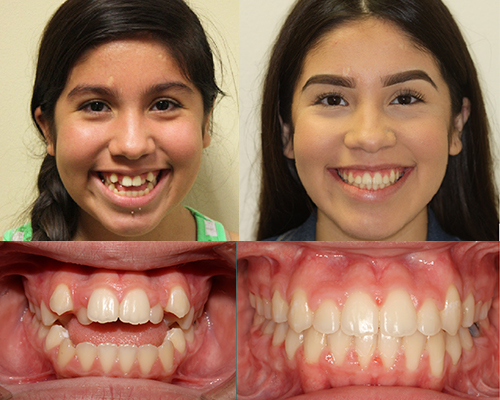Our Causey + Hall Orthodontics Statements
Wiki Article
Some Known Incorrect Statements About Causey + Hall Orthodontics
Table of ContentsSome Ideas on Causey + Hall Orthodontics You Need To KnowThe Greatest Guide To Causey + Hall OrthodonticsUnknown Facts About Causey + Hall OrthodonticsMore About Causey + Hall OrthodonticsThe Of Causey + Hall OrthodonticsThe smart Trick of Causey + Hall Orthodontics That Nobody is Talking About
What is the distinction in between a dental practitioner and an orthodontist? To answer a question that is commonly asked, both dental professionals and orthodontists help patients obtain far better oral wellness, albeit in various ways. It assists to keep in mind that dental care is an instead wide science with different clinical specializations. All dental experts, consisting of orthodontists, deal with the teeth, gums, jaw and nerves.Orthodontists and dental professionals both give oral take care of clients. Orthodontists can operate in a dental office and provide the very same therapies as other dental professionals. You can think of both doctors that deal with gum tissue and teeth problems. The main distinction is that ending up being an orthodontist needs a certain specialized in treating the misalignment of the teeth and jaw.
An orthodontist is a dentist that has gone through training to specialize in the diagnosis, prevention and therapy of irregularities in the jaw and teeth. Orthodontists can aid people of all ages.
The Best Strategy To Use For Causey + Hall Orthodontics
This includes all the essential education to end up being a basic dental professional. According to the American Trainee Dental Organization (ASDA), it indicates you will certainly need to have either a Physician of Medicine in Dentistry (DMD) or a Physician of Oral Surgery (DDS). In various other words, orthodontists need to complete oral school and after that get an orthodontics specialty education.

When you have a healthy and balanced bite, you can talk, chew and consume appropriately, therefore boosting your top quality of life. Aside from the orthodontist, we commonly see assistants working with these oral experts in their facilities. So, what is an orthodontist aide called? They're properly called orthodontic aides. They are specialized aides, and are educated to manage oral equipment and supply preventative dental healthcare.
8 Simple Techniques For Causey + Hall Orthodontics
At Advanced Orthodontics, we provide clients with a all natural therapy experience. Additionally, we offer flexible treatment routines, adaptable settlement alternatives and a fun, delightful experience. Telephone call ( 480) 357-4900 today to find out more and routine an appointment.An orthodontist is a dentist educated to identify, prevent, and treat teeth and jaw abnormalities. Orthodontists work with people of all ages, from youngsters to grownups.
All orthodontists are dental practitioners, but not all dental experts are orthodontists. Orthodontic residency programs use intensive, concentrated guideline for oral specialists. They concentrate on two areas: Exactly how to correctly and safely relocate teeth How to effectively direct advancement in the teeth, jaw, and faceOnce an orthodontist has completed training, they have the option to become board accredited.
The Only Guide for Causey + Hall Orthodontics
Imbalance, or malocclusion, is the most usual factor individuals see an orthodontist - family orthodontist. It is genetic and is the outcome of size differences between the upper and lower jaw or between the jaw and teeth. Malocclusion brings about tooth congestion, a twisted jaw, or uneven bite patterns. Malocclusion is typically treated with: Your orthodontist affixes metal, ceramic, or plastic square bonds to your teeth.
If you have just minor malocclusion, you might have the ability to use clear dental braces, called aligners, rather than typical dental braces. Some individuals require a headgear to help relocate teeth into line with pressure from outside the mouth. After braces or aligners, you'll need to use a retainer. A retainer is a personalized tool that maintains your teeth in place.
They're most typically made use of on children. They can produce extra area in the mouth without having to draw teeth. If you have a significant underbite or overbite, you might require orthognathic surgery (likewise called orthodontic surgical treatment) to lengthen or shorten your jaw. Orthodontists use cords, surgical screws, or plates to support your jaw bone.
Causey + Hall Orthodontics - The Facts
Throughout your initial orthodontic consultation, you'll likely have: A dental examPhotos taken of your face and smileDental X-raysPanoramic (360 degree) X-rays of your face and headImpressions to produce molds of your teethThese tests will certainly aid your orthodontist know how to continue with your therapy. An orthodontist is a dental practitioner that's had training to treat your teeth and jaw.Orthodontists might perform surgical procedure, exams,X-rays,and even more to help you achieve a more comfortable, healthier smile. An orthodontist is concentrated on your bite, so something like a damaged tooth would be dealt with by a dental practitioner. Orthodontists are dental professionals however not all dental practitioners are orthodontists. Orthodontists are concentrated on your bite, or the means your teeth fit together, and the straightness of your teeth.
The 5-Minute Rule for Causey + Hall Orthodontics
What specifically does an orthodontist do? Orthodontists are dental professionals who focus on dealing with irregularities in the teeth and jaws.
Clear aligners, like Invisalign, are a popular alternative for clients looking see this page for a more very discreet treatment alternative. These detachable trays are custom-made to progressively move the teeth's setting. Headwear might be utilized combined with dental braces or aligners to use additional targeted forces, especially for remedying jaw discrepancies. In cases of slim jaws, palatal expanders can be made use of to develop room for proper tooth alignment.
Report this wiki page